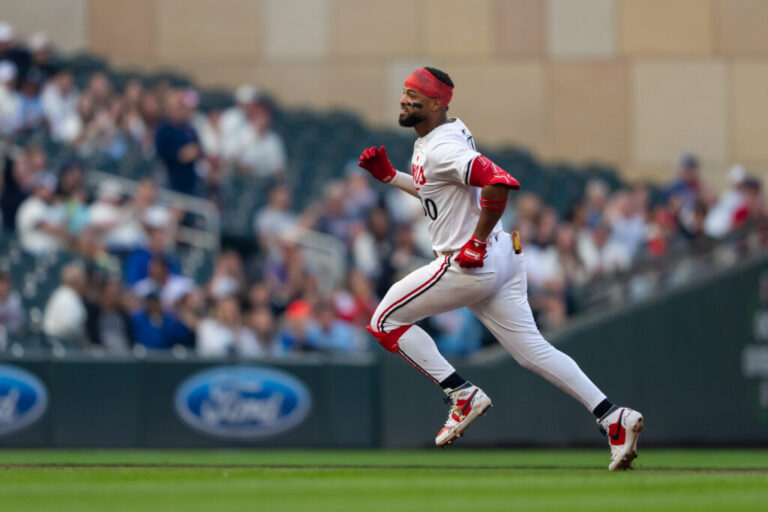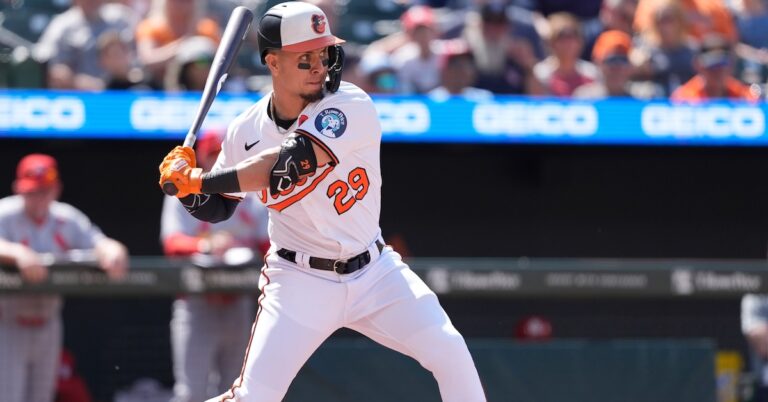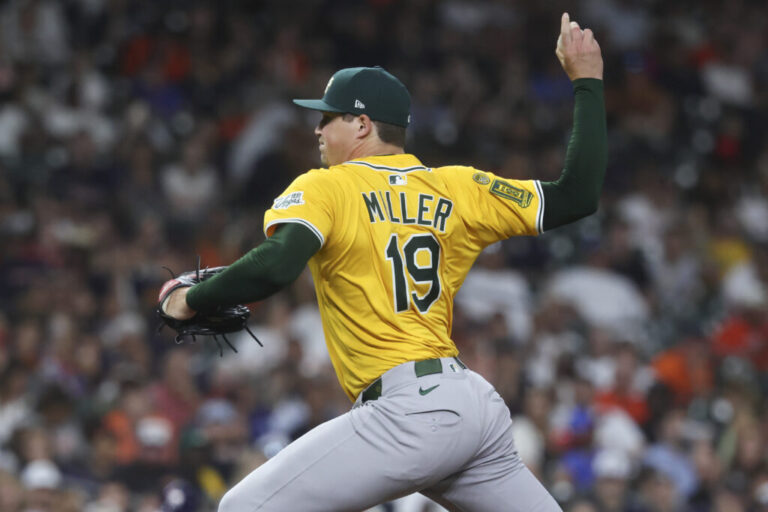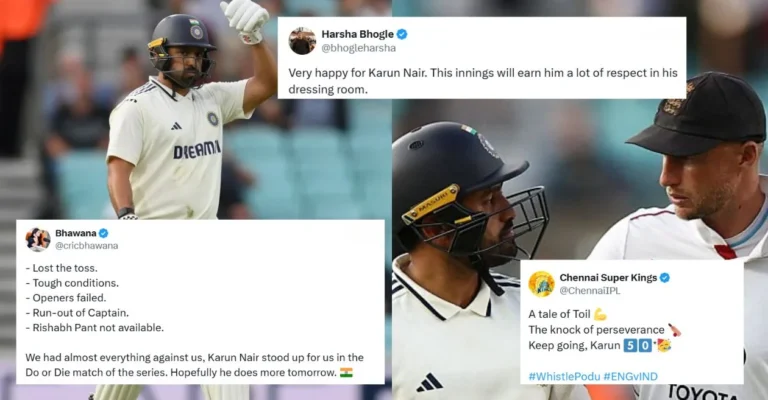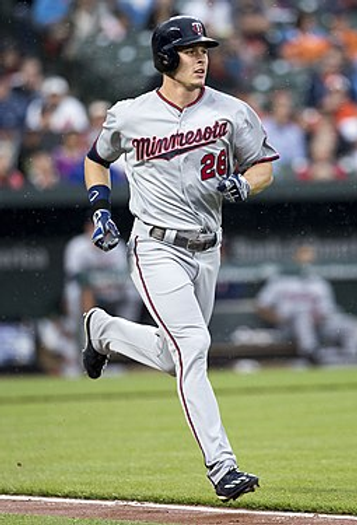
Max Kepler of the Minnesota Twins; CC by License 2.0
Throughout the entire 2024 MLB season, we saw a plethora of impact-free agents signed for relatively cheap, hoisting minimal expectations and contributing well beyond what their pay grade would imply. Luke Weaver, a playoff hero and consensus top-end closer for the American League champion Yankees, was signed for a measly $2M last offseason. Jurickson Profar, a late offseason signing for the Padres, posted a 139 wRC+ and a 4.3 fWAR en route to his first career all-star game nod. Jesse Winker and Michael Lorenzen, both signing for south of $5M, managed to net potential impact prospect capital for the Nationals and Rangers respectively. With such a loaded free agent class hitting the open market going into the offseason, it’s difficult not to be enamored with the top talents seeking new contracts, though the annual bargain bin marketplace should not be undermined, especially this year.
Turnbull is a very difficult free agency case to evaluate. He was highly effective as a starter, though between Philadelphia’s pitching depth and a season-ending lat strain, he was prevented from making enough of a case to get paid impact starter money this offseason. Turnbull’s biggest strength happens to be the depth of his repertoire, throwing 6 different pitches >5% of the time. His cut fastball is a platoon-neutral offering, he can mitigate success against both sides with his sweeper and changeup, both solid offerings, and the curveball was as close as it gets to unhittable. Turnbull made it abundantly clear that he has both the traits and pitch ability to be a starter going forward, though it remains to be seen if a team will pay him money for that type of role. Turnbull’s free agency is very reminiscent to that of Nick Martinez, a starter turned reliever who was eventually converted back into a starter upon signing with the Reds, who landed a 2-year, $26M deal, with a player option for the second year. Should Turnbull settle for a similar contract, he would be given the opportunity to prove both his health and sustainability as a capable middle-of-the-rotation arm. Assuming he departs from Philadelphia, he’ll likely be given a full-time starter role, bolstering his value looking toward 2026.
There may not be a pitcher in baseball more negatively impacted by poor ballpark conditions than Sims, who displays elite stuff year after year. Sims tends to elevate the fastball, an easily above-average pitch might I add, to a degree generally unseen by pitchers trapped within the confines of Great American Ballpark, which was detrimental to his results, and has been for his whole Reds career. Keeping the pitch up in the zone worked pretty well for Sims if you look at just about anything other than run allowance. It generated a viable xWOBACON when compared to the average fastball, it generated chases at an above-average rate, and it racked up whiffs at just about an average level. The issue falls on the dimensions of Great American Ballpark, one of the most hitter-friendly locations in modern baseball. Sims posted a 54.5% fly ball rate in 2024, the third-highest mark in baseball among qualified relievers. Not typically something a pitcher wants, but for a heavily N-S pitcher it’s expected. Escaping from Cincinnati and Boston, two stadiums residing top four in ballpark factor, will do wonders for his results. A forward-thinking team should see the arsenal, headlined by one of the best sweepers in baseball, and splurge on this profile for well below what he’s worth. As for Sims, a one-year deal with an adept ballclub in a less harmful pitching environment should be seen as an opportunity to build up his value and hit the market again next offseason.
Michael Conforto is an obvious victim of the outrageous ballpark dimensions Oracle Park provides, especially as a left-handed hitter. Despite the difficult environment, Conforto still performed well in a relatively acceptable sample, posting a 112 wRC+ and a .327 wOBA in 488 PAs, though the data suggests this could just be the tip of the iceberg for the former all-star. Conforto’s xWOBA-wOBA differential was a whopping -0.058, one of the largest in the sport. Giants bats generally tend to continuously perform below their capabilities due to the ballpark’s obscure and atypical dimensions throughout the outfield, with nearly their entire daily lineup displaying xWOBAs below their actual result counterpart. Offensively, there really isn’t a glaring flaw in Conforto’s game. His exit velocities are top of the line, and he’s often optimizing his hard contact with proper launch angles, posting a near 12% barrel rate. He’s not chasing at a very high rate, and thus he’s walking at a respectable 8.6% clip. The hit tool isn’t anything to love, though it’s far from detrimental. In a market where impact-free agents tend to land massive, lengthy deals with outrageous average annual values, Conforto shouldn’t command as much as he’s worth. Landing a very well-rounded bat with the upside displayed by the lefty could be the missing piece needed for some penny-pinching World Series hopefuls.
Max Kepler is yet another odd free agency case to evaluate. He’s shown flashes of greatness, especially in 2023 when he posted a 123 wRC+ and a 2.8 fWAR in 130 games, his first real healthy sample size since 2019. 2024 was a disaster, however, as Kepler could not find that offensive stride reminiscent of the season prior, with injuries plaguing yet another year for the German native. Kepler missed time with a knee contusion in early April, before being placed on the season-ending injured list with left patellar tendinitis in September. Missing vital time early in the season limited Kepler’s ability to catch heat for a Twins team desperately needing his presence, as he put up a measly 94 wRC+ and 1.0 fWAR in just 105 games, an obvious regression. Even in an off-year, we still saw Kepler bang out the highest max exit velocity of his career at 115.4 MPH, 23rd in baseball last season. He’s evidently still capable of posting plus results. While Kepler’s overall bat-to-ball ability regressed marginally from his peak 2023 performance, he continued to make the most of his contact to the tune of a 37.4% LA SweetSpot rate, significantly above the league average. There’s a ton of volatility in the performance Kepler can deliver in 2025, but we’ve seen zero consistency throughout his entire career, and the last two seasons are a prime example of the absolute duality a player of this demographic can have, but the upside Kepler brings to the table is enough to completely revitalize a lineup in need of a strong lefty bat.
